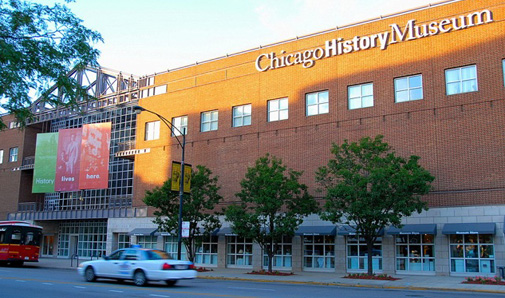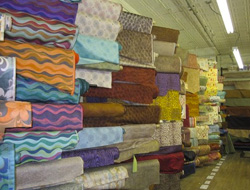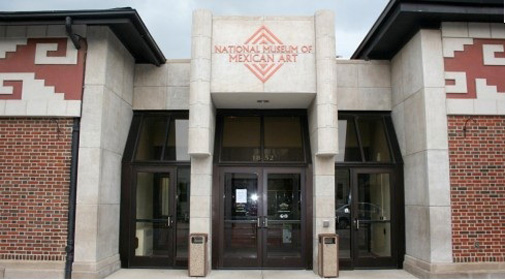Conference & Stage Expo
A Trip to Chicago Museums, Fabric Shop

Chicago has a number of well-known museums and other attractions. One of the Regional Attractions offered before the start of the 2013 Annual Conference & State Expo in Milwaukee will introduce several venues that are not as widely known. Signup for the day-long event can be completed along with Conference registration.
The Chicago History Museum is the city’s oldest cultural institution, predating the Civil War. During the Great Chicago Fire, its first building was destroyed. The original Ontario and Dearborn site was in use until the late 1920s when the Historical Society’s expanded collection and the city’s centennial convinced them to build a new structure on the present site at the south end of Lincoln Park. Since then, that building has been expanded and renovated. The Museum’s Costume and Textile Collection contains over 50,000 costumes and textile artifacts from the mid-18th century to the present.
Members will visit the new, one-of-a-kind exhibition “Inspiring Beauty: 50 Years of Ebony Fashion Fair” in the morning. This exhibition explains how Eunice Johnson brought couture fashion to African-American communities and raised millions of dollars for charity. The designers represented include Oscar de la Renta, Christian Dior, Stephen Burrows, Yves Saint Laurent, and Patrick Kelly.
After lunch at the museum café, the afternoon visit will be to one of Chicago’s vibrant neighborhoods – Pilsen. German and Irish immigrants settled here in the 1840s, encouraged by the construction of the Southwestern Plank Road (now Ogden Avenue), the Illinois & Michigan canal and the Burlington railroad. Manufacturing, lumber mills, sweatshops, and railroad yards created thousands of jobs for unskilled workers in the 1870s. Pilsen was important during the many strikes in the late 19th century that led up to the Haymarket Riot in 1886. A Bohemian restaurant called The City of Plzen gave the neighborhood its name.

The Textile Discount Outlet, a subsidiary of LZ Fabrics on 21st Avenue near Cermak and Damen, is housed in one of the many old, multi-storied factory buildings in Pilsen. LZ Fabrics caters to the Chicago community and carries a wide variety of the more basic fabrics, along with beaded laces and leather pieces. USITT members will receive a discount on purchases that day.
During World War I dozens of new immigrant groups, including some Mexicans, moved into the area. The expansion of the University of Illinois at Chicago relocated more Mexicans into Pilsen in the 1950s and 1960s. Mexican artists began decorating the neighborhood with colorful murals and mosaics. Try to see the ones on 19th Street west of Ashland or on/in the former church at 18th Place and Paulina.
Pilsen residents have resisted the efforts of gentrification and have preserved the community as a gateway for Hispanic immigrants. The Mexican Fine Arts Center Museum, founded in 1982, aimed to establish an arts and cultural organization committed to accessibility, education, and social justice. In 2006, the name was changed to the National Museum of Mexican Art. It is considered one of the most prominent institutions for Mexican art and culture in the United States. The permanent collection traces the creative skills of the people of Mexico from pre-Columbian carvings, pottery, and textiles to the best that contemporary artists produce.


